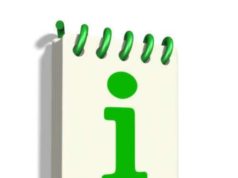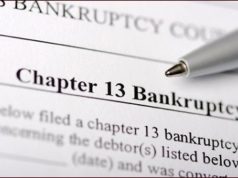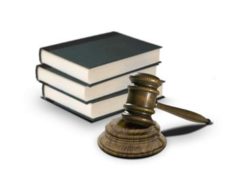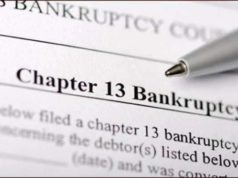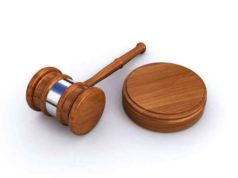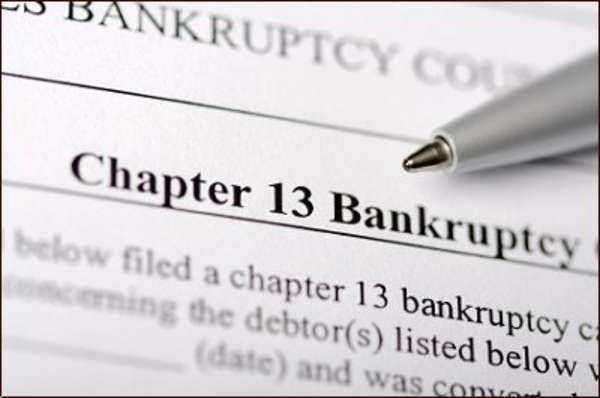
Chapter 13 bankruptcy, also referred to as reorganization bankruptcy, is a form of bankruptcy that allows individuals to pay their debts through a court-approved payment plan. People who file for Chapter 13 bankruptcy must have a regular income and should have a total debt that falls within the dollar limits set by law. In this article, we will go over the seven steps of filing for Chapter 13 bankruptcy in detail, using government resources throughout.
Step 1: Determine Your Eligibility
Before filing for Chapter 13 bankruptcy, it’s essential to determine whether you’re eligible. The U.S. Bankruptcy Code sets specific requirements for filing for Chapter 13 bankruptcy. Here are the eligibility requirements:
– You must be an individual, not a business entity
– You must have regular income
– Your unsecured debts must be less than $394,725 and secured debts must be less than $1,184,200
– You cannot have filed for bankruptcy in the previous 180 days
– You must complete a credit counseling course from an approved agency before filing
If you meet the above requirements, you may be eligible for Chapter 13 bankruptcy.
Step 2: Hire an Attorney
It’s possible to file for Chapter 13 bankruptcy without an attorney, but it’s not recommended. Bankruptcy law is complex, and an attorney can help you navigate the process, ensure that your rights are protected, and advise you on important decisions. Additionally, if you make a mistake filing your bankruptcy, it could result in your case being dismissed, and you could lose the protection bankruptcy provides, which is why it’s best to hire an experienced bankruptcy lawyer.
You can find a bankruptcy attorney near you by searching on the National Association of Consumer Bankruptcy Attorneys website.
Step 3: Complete the Bankruptcy Forms
The next step is to complete the bankruptcy forms. These forms provide information about your finances, assets, debts, income, and expenses. It includes the bankruptcy petition, schedules, statement of financial affairs, and a repayment plan. You may need to provide additional documentation, such as pay stubs, tax returns, and bank statements.
The U.S. Courts website provides fillable bankruptcy forms that you can download and complete. These forms are designed to be used by people who don’t have an attorney. However, an attorney can assist you with the forms if you prefer to have legal representation.
Step 4: File Your Bankruptcy Forms
The next step is to file your bankruptcy forms with the bankruptcy court in your area. You must pay a filing fee to the court when you file your bankruptcy forms. As of August 2021, the filing fee for Chapter 13 bankruptcy is $310. If you can’t afford the filing fee, you can request a fee waiver from the court.
You should file your bankruptcy forms in the district where you have lived for the past 180 days or where you have a principal place of business or property. You should also file your bankruptcy forms with the court where any lawsuit or court order relating to your property or debts is pending.
Step 5: Attend the 341 Meeting
After you file your bankruptcy forms, you’ll need to attend the 341 meeting, also known as the meeting of creditors. This meeting is typically held between 21 and 50 days after you file your bankruptcy forms. The purpose of the meeting is to allow the trustee, creditors, and anyone else who wishes to attend to ask you questions about your debts, assets, income, and expenses.
The 341 meeting is mandatory, and failure to attend could result in the court dismissing your bankruptcy case. You’ll receive a notice from the court with the date, time, and location of your 341 meeting.
Step 6: Develop and Present Your Repayment Plan
One of the primary benefits of filing for Chapter 13 bankruptcy is that it allows you to develop a repayment plan that you can reasonably afford. The repayment plan details how much you’ll pay each month, how long your plan will last, and which debts will be paid. Your repayment plan must be presented to the court, and your creditors will have an opportunity to object to it.
An experienced attorney can help you create a repayment plan that meets the requirements of the bankruptcy court and addresses your financial situation. Once the court approves your repayment plan and you make your first payment, your creditors are required to stop attempting to collect any pre-bankruptcy debt.
Step 7: Complete Your Repayment Plan
Once your repayment plan is approved by the court, you’ll be required to make regular payments to the trustee, who will then pay your creditors according to the terms of your repayment plan. The court will issue a discharge once you complete your repayment plan, which discharges your debts, except for some non-dischargeable debt like child support and taxes.
It’s important to remember that Chapter 13 bankruptcy requires you to stick to your repayment plan, which means you’ll need to make payments regularly and on time. If you miss a payment, your case could be dismissed, and your creditors could resume collection efforts.
Conclusion
Filing for Chapter 13 bankruptcy can be a complex and confusing process, but by following these seven steps, you can get through it successfully. Seeking legal counsel, familiarizing yourself with the bankruptcy process, and using available resources can make the experience easier. With dedication and diligence, you can successfully discharge your debts, protect your property, and start fresh with a clean financial slate.




